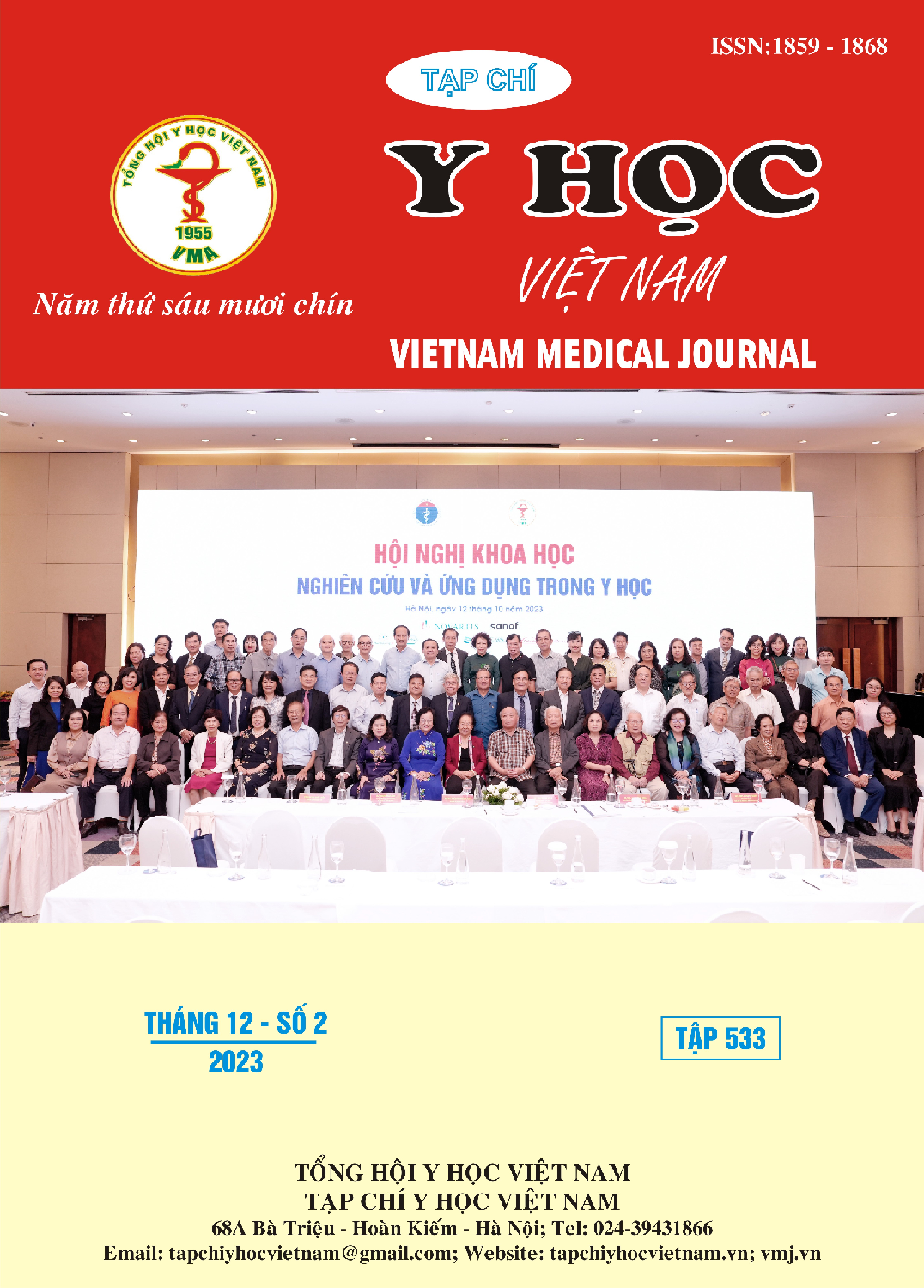DETECTABILITY OF URINARY STONES ON VIRTUAL NONENHANCED IMAGES GENERATED AT DUAL-ENERGY CT
Main Article Content
Abstract
Purpose: To evaluate the detectability of urinary stones on virtual nonenhanced images generated at both pyelographic-phase and excretory-phase dual-energy computed tomography. Methods: Cross-sectional study from 05/2022 to 10/2023, at Nguyen Tri Phuong Hospital, Ho Chi Minh City. DECT images of 197 patients with postsurgical-proven urinary stones were analyzed. All patients were examined with DECT urography in 3 phases: true nonenhanced (TNE) image, pyelographic phase and excretory phase. The contrast medium in the renal pelvis and ureters was virtually removed from pyelographic phase and excretory-phase images by using postprocessing software, resulting in virtual nonenhanced (VNE) images. The sensitivity regarding the detection of calculi on VNE images compared with true nonenhanced (TNE) images was determined. Results: The Sensitivity, specificity of VNE created from pyelographic phase for dêtcting urinary stones were95,4% and 100%., The sensitivity, Specificity of VNE created from excretory-phase were 83,2% and 94,6%. Most urinary stones detected on VNE appeared smaller. VNE had a moderate detection rate for small stones (<5mm) with the sensitivity of VNE created from the pyelographic phase was 74,2% and the sensitivity of VNE created from excretory-phase was 31,4%. Most undetected stones wewe in the urinary calyx with the sensitivity of VNE created from the pyelographic phase was 93,05% and the sensitivity of VNE created from excretory phase was 77,7%. Conclusions: VNE can detect large (>5mmmm) calculi with good reliability. VNE created from the pyelographic phase has a higher detectability than VNE created from the excretory phase.
Article Details
References
2. Ketelslegers E, Van Beers BE. Urinary calculi: improved detection and characterization with thin-slice multidetector CT. Eur Radiol. 2006; 16(1):161-165. doi:10.1007/s00330-005-2813-y
3. Scheffel H, Stolzmann P, Frauenfelder T, et al. Dual-energy contrast-enhanced computed tomography for the detection of urinary stone disease. Invest Radiol. 2007;42(12):823-829. doi:10.1097/RLI.0b013e3181379bac.
4. Takahashi N, Vrtiska TJ, Kawashima A, et al. Detectability of Urinary Stones on Virtual Nonenhanced Images Generated at Pyelographic-Phase Dual-Energy CT. Radiology. 2010; 256(1):184-190. doi:10.1148/radiol.10091411.
5. Moon JW, Park BK, Kim CK, Park SY. Evaluation of virtual unenhanced CT obtained from dual-energy CT urography for detecting urinary stones. BJR. 2012;85(1014):e176-e181. doi:10.1259/bjr/19566194
6. Park JJ, Park BK, Kim CK. Single-phase DECT with VNCT compared with three-phase CTU in patients with haematuria. Eur Radiol. 2016; 26(10):3550-3557. doi:10.1007/s00330-016-4206-9.
7. Botsikas D, Hansen C, Stefanelli S, Becker CD, Montet X. Urinary stone detection and characterisation with dual-energy CT urography after furosemide intravenous injection: preliminary results. Eur Radiol. 2014;24(3):709-714. doi:10.1007/s00330-013-3033-5


